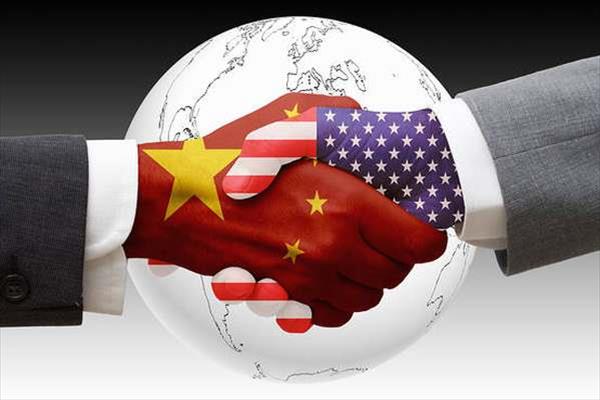By: Ambassador Munir Akram
This century’s future will be largely defined by the relationship between a rising China and a resentful America. China has so far risen peacefully. Over 40 years, the US and China have developed an interdependent economic and a largely cooperative political relationship. The positive tone of the two Xi-Trump summits generates hope that China and America may yet avoid the Thucydides Trap (which postulates the inevitability of a clash between an established and rising power).
At the recent 19th CPC Congress, President Xi Jinping outlined China’s rather modest objectives: to become “a moderately prosperous country” and a “fully modern” economy and society by 2035 and “a global leader of composite national strength and international influence” by 2050. The rivalry between China and the US will depend on the vibrancy of their governance systems.
On the other hand, Trump’s ‘America First’ slogan is a signal of a determination to win back the economic, political and strategic pre-eminence which the US enjoyed over the last 70 years. Trump’s ‘ideologue’, Steve Bannon, (out of office but still influential), sees China as “the greatest -term threat to the US”. He said: “We have to reassert ourselves as the real Asian power….”
Fortunately, Trump has so far stepped back from his campaign denunciations of China and erosion of the ‘One China’ policy and focused instead on securing Chinese cooperation to confront the North Korean nuclear threat and to redress the Sino-US trade ‘imbalance’. However, Trump may be disappointed if these aims are not achieved in the near term.
This could lead to a more confrontational course, especially since even his ‘grown-up’ advisers, like Defence Secretary Mattis and Secretary of State Rex Tillerson, see China more as a rival than a partner and have outlined policies to contain, and if needed, to confront it.
In the economic sphere, the US enjoys several advantages: the US dollar is the world’s main reserve currency; the US heavily influences, if not controls, global financial markets and institutions; it sits at the top of several ‘supply chain’ networks, and maintains a (narrowing) lead in innovation and new technologies. But ‘demand’ in the US economy is low since people’s ‘basic needs’ have been met and population growth is slow.
Manufacturing jobs have been lost offshore due to high wages and aging equipment. They are unlikely to return. Despite massive financial injections, the US growth is not more than two to three per cent. China’s growth has been driven to a considerable extent by exports and investment. It is now vulnerable on the external front given rising Chinese wages and Western trade protectionism. However, trade dependency is a two-way street.
And, the Chinese economy will continue to grow due to rising demand from: the 300 million Chinese who are even now emerging from poverty, the rapidly expanding consumerism of China’s growing ‘middle class’ and the trillion dollars to be invested in projects under the historic Belt and Road Initiative. Meanwhile, China is creating an alternative financial structure that could eventually challenge the US-dominated financial system and it is investing heavily, at all levels, in advanced technology.
The US retains a significant military edge over China. Its $600 billion military budget is more than four times larger than China’s. The US possesses and is developing cutting-edge weapons systems and war-fighting techniques.
It has established formal and informal military alliances with a number of militarily significant states, including three of Asia’s largest powers: Japan, India and Australia. The US will continue attempts to exploit China’s maritime disputes in the South China Sea and to build a string of alliances around China’s periphery to mobilise resistance to China’s influence in the region.
However, China is rapidly developing the capacity to confront or neutralise America’s military advantage. First, although China’s defence budget is smaller ($150bn), it can deliver a ‘bigger bang for the buck’ (due to the huge cost differentials between China and the US). Second, under President Xi Jinping’s guidance, the PLA is being comprehensively reformed to become a “technologically sophisticated army”. China is spending heavily on military R&D. Some of the weapons systems it has recently unveiled have surprised Western military observers.
Of course, America’s Asian military alliances are formidable. China’s only strategic and military ‘partner’ now is Pakistan. But to a considerable extent, China will be able to circumvent the US and ‘allied’ naval dominance across the Indo-Pacific through the Belt and Road connection across Eurasia. Notably, CPEC will transform China from a one-ocean to a two-ocean power.
Second, China is building strong economic and military links with a resurgent Russia which will amply balance America’s Asian alliances. Finally, India, if not Japan and Australia, may turn out to be a ‘fake friend’. China is its largest trading partner; while India will welcome America’s economic, military and technological bounty, it is unlikely to confront China militarily, especially not to advance US interests.
While America’s historical alliances no doubt enhance its global power and influence, it is also severely constrained, politically and militarily, by ‘legacy issues’, such as the unconditional commitment to Israel; the ‘war on terror’; the intervention in Iraq; the confrontation with Iran; the Afghan quagmire; and the ‘new Cold War’ with Russia.
Most importantly, the outcome of the strategic rivalry between China and America will depend on the vibrancy and credibility of their respective systems of governance. China’s ‘socialist democracy’ is now seen as a most effective form of government. In contrast, the US political system seems to be broken, divided and corrupt.
In an incisive article last month, entitled: ‘When China Leads’, Kevin Rudd, the former prime minister of Australia, writes: “The West, by and large, has no idea what awaits it as China continues its rise. The United States … has become a global laughingstock…. Europe … remains a rolling seminar on itself…”.
He adds: “It would be reckless to assume, as many still do in the US, Europe, and elsewhere, that China’s transition to global pre-eminence will somehow simply implode….” In such circumstances, Washington would be wise to consider seriously Xi Jinping’s proposal to create “a community of a shared future for mankind”.
The writer is a former Pakistan ambassador to the UN.







